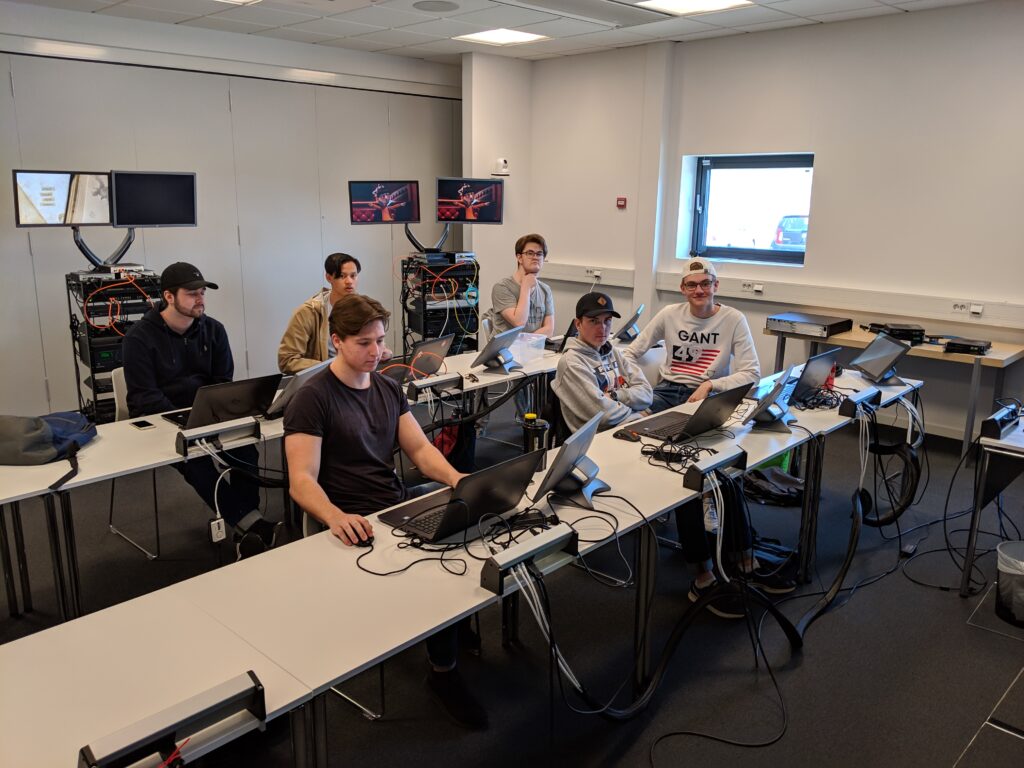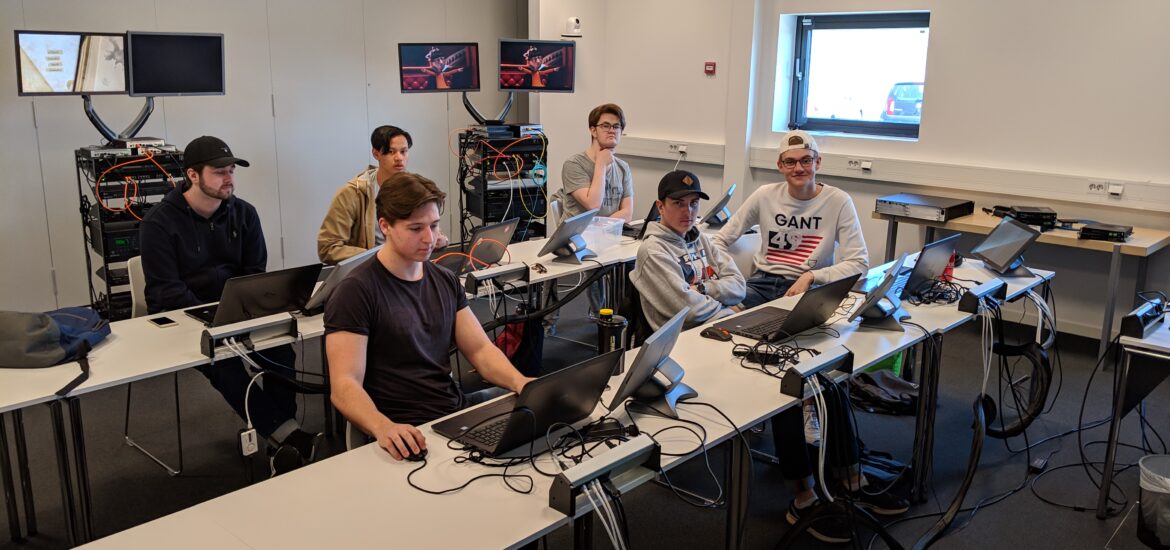So, I wrote this and published it on AVIXA Xchange about a month ago. I thought I’d add it here to.
The link to the Xchange article is this: https://xchange.avixa.org/posts/how-can-we-get-new-people-to-the-av-business?room_id=av-education-for-the-next-generation

I’d like to ask a question to everyone who struggle with finding new people to work with. New employees or colleagues. I’m looking for real-world examples of how others actively try to get new people into AV. Young or old.
I’d like to ask a question to everyone who struggle with finding new people to work with. New employees or colleagues.
How do you tackle this problem? And now I don’t mean how you work with social media to promote the company or how you write that ad for an open position in the company. I’m looking for real-world examples of how others actively try to get new people into AV. Young or old.
Here in Sweden I often hear that companies struggle to find new people to employ. Often I hear the word “pond” being used to describe how small the Swedish AV community actually is and that sooner or later you meet the same people as your new co-worker but in a new company.
Many say we need new people in all areas of AV. Designers, technicans, installers, programmers and pretty much anything in between.
With this post I thought I’d go first and tell you how we as a very small (just above 50 people in the company) try to do something to help solve this problem and I hope to hear from you how you do it! The story below might be long and in some parts detailed but that is what I myself is looking for, the details that others may have thought about. The small things that can be the difference between a mediocre and a successful project. It can be anything, our project was with young people, but it can be anything that try (and sometimes fail) to get new people into the business.
For many years the conversation was the same, where can we find a suitable person for this or that. I myself am heading our support department and I had the same problem as everyone else. I can’t find the right fit for our open positions.
In early 2018, I contacted a local high school here in Karlstad, Sweden. I talked in length with them about finding a way to get in contact with some of their last year students (17-19 years old) during their last year of studies to find a way to create some kind of AV track during their last year of studies. It wasn’t that easy to find a way that would fit into the Swedish educational system since it is based a lot on national standards where schools have set curriculums that are hard to deviate from.
There is however a part of all non-theoretical programs in school here in Sweden where the students need to be at a local company and get to know life after school a bit. How this is set up differ from school to school but in general it is about 15-20 weeks spread over three years and here in Karlstad the two schools I spoke to had placed a lot of that time during the final term of studies.
So, what we did was to offer six to eight spots for the two schools where their students could apply to come to us for six of their weeks to learn more about AV. We started by inviting all students in both schools that studied these particular programs (a mix of electrician and IT technician) and that was on their last year to come visit us and we got to show who we are, what we do and also talk about the AV business for a couple of hours. We also told them about our program where they could learn about what we do in AV.
After this visit they could send in an application and they got to answer some question on an online form that we created. What they wrote in their application wasn’t that important here, the important thing was to find the students that was actually interested in us as a company and the AV business. Everyone that sent in an application was invited back in groups of 6-10 persons at a time so that we could try to find the ones that 1) was actually interested 2) speaks. And by speaks I mean the ones that asked questions, was curious about what we do and so on. It was quite obvious who was interested and who just took any chance to not be in their ordinary classes for a few hours.
We as a company are a Value Added Distributor, we work with a set of brands that we sell to our Scandinavian customers. The customers are integrators of different kinds but never the end users. We do however support our customers when they have a project with their customers. Be it a conference room, a court room or a class room. Our main brands are Crestron and Panasonic but we also carry about 40-50 other brands that we work with on the Swedish market. Of course, this will mean that our courses, our program for students will be centred around these brands and how they work.
So, how do you teach 17-year-old kids how to design a system, how to install, configure and program it? As it turns out, the answer is “slowly”. When they come to us they know what an HDMI cable is, they know how to make a patch cable. But they have never in school been prepared for anything AV related at all.
So, I’ll outline what we try to teach them. I would love to be able to extend this to another six weeks and teach them even more but time and teaching resources are unfortunately limited and this is something we do besides everything else.
So, the first week we start giving them a basic product knowledge. Showing them different core products like Crestron processors, keypads, touchpanels, HDBaseT extenders, explaining to them what the difference is between different kind of communication standards and ways to wire a system. We actually use the same courses we normally teach our customers, like Crestron CTI courses and when they are done with the program, they will walk away with an official document saying they have completed some of the courses.
We actually started a new group of six students just this week. The first day, we started with the course Crestron Fundamentals Commercial course. A day of learning about some core technologies and the products that are important right now. We then went on to two days of Crestron Technician Fundamentals, a course with more practical parts, learning about firmware updates, security settings in networks, different ways to communicate with products, learn about some older generation products we may see in installations and so on. It’s obvious now that we do this for the fourth year (not in a row though because of a COVID break) that the practical parts are so much better and it’s really important with hands-on training. Actually connecting to the products, load a program and some graphics, configure the devices to communicate with each other and almost every time see things actually work. Then reset the products and do it again but in a slightly different way. The last day of this week isn’t an official course in any way but an entirely practical day where we set up a Linux server, install a virtual processor and do the same thing over again but without the physical hardware. Also, they now their own locally installed Crestron processor wherever they go.
Next week is set aside for an entire week of programming a system. We take the three day course CTI-P101, Foundations of Crestron Programming, and stretch it over five days so that they really understand the logic behind our kind of programming.
Of course, it’s not only Crestron courses, even though we will run them through Crestron NVX, Flex for Teams, two networking courses and give them a taste of further programming connecting different brands, creating solutions and having products communicate with each other to create something useful.
Other topics of studies during the six weeks will be two days of D-Tools and Visio (I wish we could have a week), Streaming and recording lectures, meetings, webinars etc where we will use Epiphan as a tool, we will go through LED walls and the pitfalls there, go through theoretical basics about audio, teach them the difference between a balanced and an unbalanced cable, make sure they know how Dante can be used in an AV installation and how it differs from for example AES67 and make sure they go through at least Dante Level 1 and 2.
Now, all this isn’t worth much if we can’t help them finding their future employer. So, besides making sure they know a lot (and not forget half of it when they walk out the door), we also invite companies to visit. And the interest to meet these young people has been huge. We invite our customers, the installation an integration companies that is, to come visit us, talk (very short) about their own companies and let them meet the students and hopefully employ some of them. Last year we had a group of eight students and four of them got a job with one of our customers. The first year we ran the program, three out of six students got a job and are still in the business. The second year was a bit slower (I blame the pandemic) with only two out of seven that completed all six weeks that got a job in AV.
So, that is my story, what is yours? And how can we all together work towards finding new ways to get more people in to our business?
Oh, and by the way. I actually have the privilege of having employed two of the students in my team. Just that small thing, finding two people that fit into our small group and can help our customers every day. Just that small thing makes this whole project worth even more to me and the company I work for!
